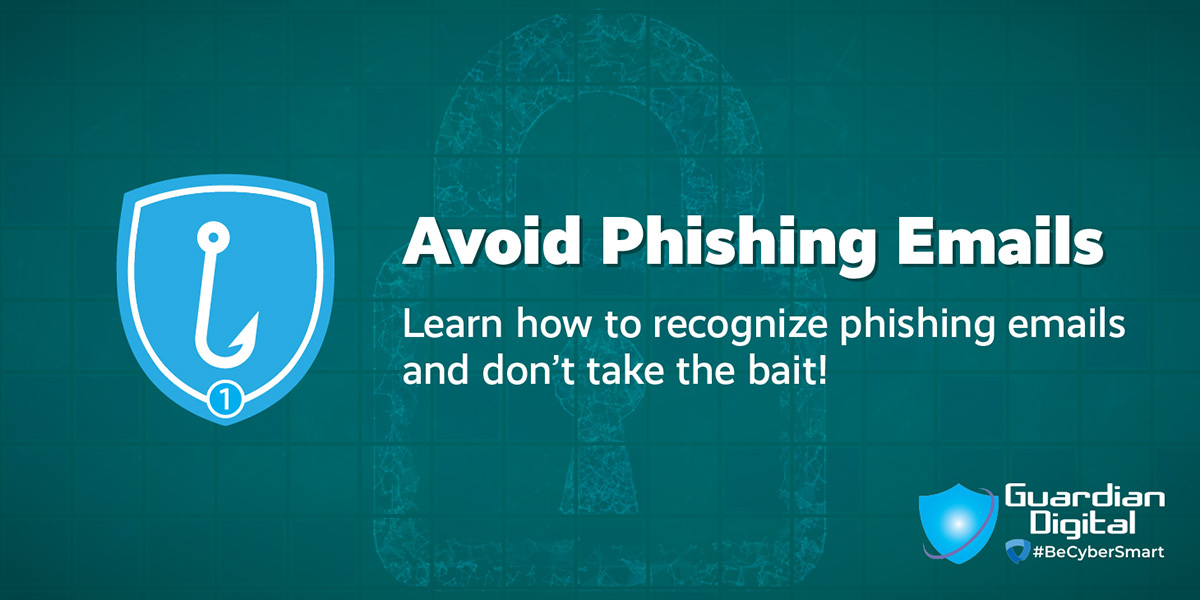Tip - Avoid Phishing Emails

Learn how to recognize phishing emails and don’t take the bait!
Phishing is the predominant modern cybersecurity threat businesses face, accounting for over 90% of all cyberattacks and breaches. Modern phishing attacks are highly targeted and employ stealthy social engineering techniques to manipulate psychology, evade security defenses and deceive users. That being said, being aware of some basic tips and best practices for recognizing and avoiding phishing emails is a critical part of protecting sensitive information and preventing attacks.
Tips & Best Practices for Avoiding Phishing Attacks
Check for spelling and grammatical errors, which are a key indication that an email may be a phishing attempt. Also, keep an eye out for suspicious subject lines and signatures.
Don’t trust the display name. Just because an email says it’s from a known and trusted sender doesn’t necessarily mean it really is. Even if the email address is legitimate, the message could be coming from a compromised account.
Evaluate the salutation. Is the greeting vague or general? Does the tone sound suspicious coming from the person the email is supposed to be from?
If an email appears strange in any way, make a phone call to the sender to confirm the legitimacy of the email prior to interacting with it.
If you receive an email from a source you know but it seems suspicious, contact that source with a new email, rather than simply hitting reply.
Scan all attachments for viruses, malware, or other dangerous code.
Verify shared links to ensure that they do not lead to fraudulent websites or malicious code.
Beware of urgency. Phishing emails often try to convince recipients to act quickly, without thinking things through.
Think before you act! Take adequate time to evaluate each email you receive before clicking on links or downloading attachments. For instance, ask yourself: Does this order confirmation email correspond to a recent purchase I have made? Do the sender and recipient addresses make sense?
Want to learn more about how to secure business email against phishing and other attacks? Get in Touch>>
Phishing Is Evolving
CyberSecurity Month
- Tip - Avoid Phishing Emails
- Tip - Being Cautious of Spam Email
- Tip - Be Wary of Malicious URLs
- Tip - Protect Against Spoofing & Sender Fraud
- Tip - Protect the Privacy of Your Email with TLS
- Tip - Don't Rely on Native Microsoft 365 Email Protection Alone
- Tip - Implement TLS to Keep Your Email Secure
- Tip - Endpoint Security Is Not Enough
- Tip - Conduct Regular Email Security Audits
- Tip - Configure Email Account Settings with Security in Mind
- Tip - Learn How To Spot Threats to Business Email
- Tip - Backing up Your Data and Isolate Your Backups Offline
- Tip - Protect Business Email from Phishing Attacks
- Avoid Sending Sensitive Information Over Email
- Tip - Learn About Malicious Links
- Tip - Prevent Zero-Day Attacks
- Tip - Business Email Is for Business Only
- Tip - Learn How To Identify Social Engineering Attacks
- Tip - Know Your Email Risk
- Tip - Safeguard Your Inbox from Malicious Mail
- Tip - Understand How Phishing Attacks Are Carried Out
- Tip - Know the Steps in a Spear Phishing Attack
- Tip - Familiarize Yourself with the Anatomy of a Whaling Attack
- Tip - Understand How Malware Attacks Work
- Tip - Learn the Steps in a Ransomware Attack
- Tip - Understand the Phases of a Business Email Compromise (BEC) Attack
- Tip - Know What Zero-Day Attack Is & How It Works
- Tip - Familiarize Yourself with the Phases of an Account Takeover (ATO) & Lateral Phishing Attack
- Tip - Learn the Steps in a Social Engineering Attack
- Tip - Understand the Types of Email Viruses to Be on the Lookout For